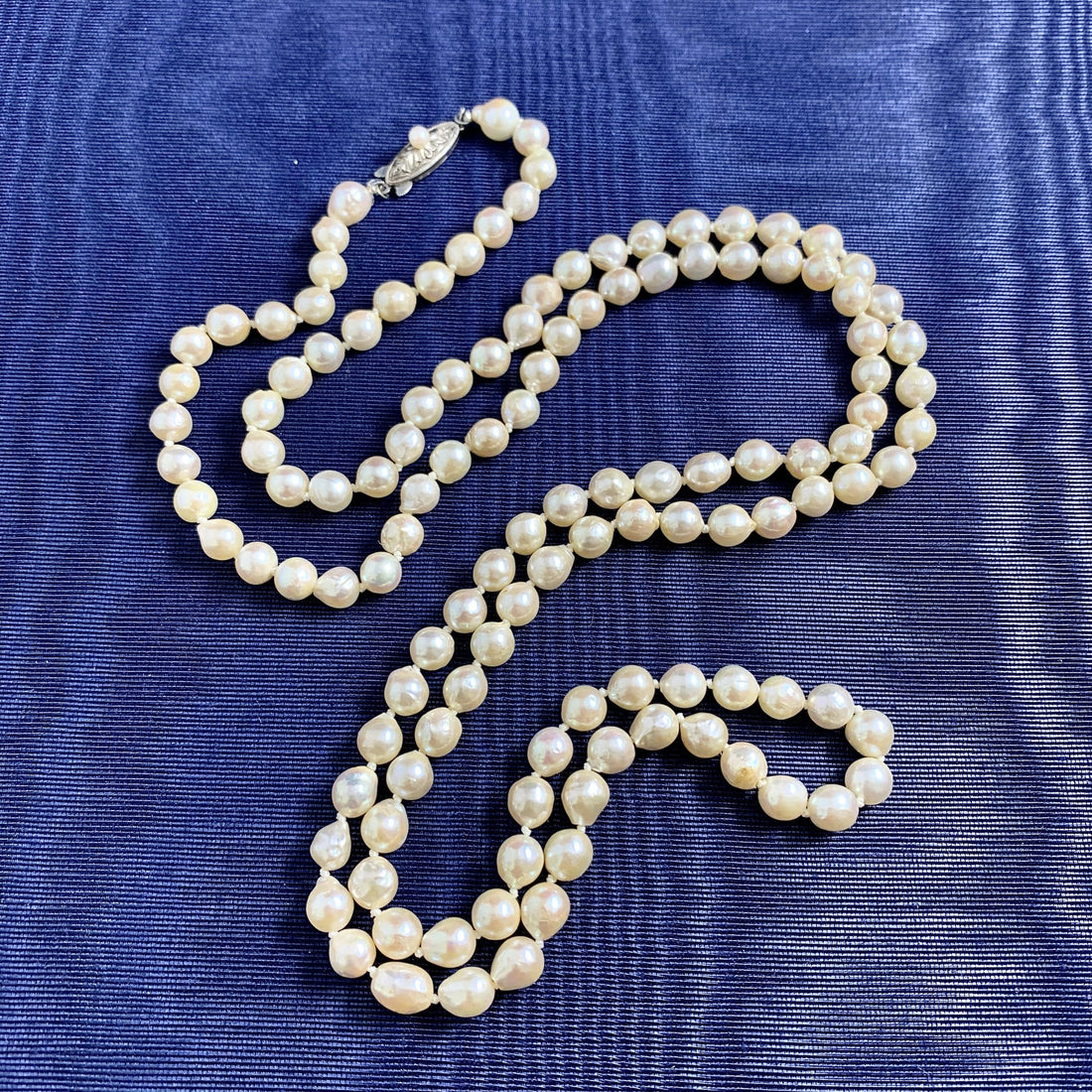THE MONTH OF JUNE FEATURES NOT ONLY ONE BIRTHSTONE, BUT THREE TO CHOOSE FROM: PEARL, MOONSTONE, AND ALEXANDRITE.
Each of these beautiful gems has an unusual history, with Alexandrite being the youngest. Alexandrites were discovered in the 1830s in Russia’s Ural Mountains. These gems are a form of the mineral chrysoberyl and were named for Alexander II, the heir apparent to Russia. Alexandrites will change color under different lighting, from a deep red to purplish-red under incandescent light to a bright green to blueish green under fluorescent light or daylight. The gemstone became quite popular in Russia due to the fact that the imperial military’s colors were red and green. Alexandrites are now found in Brazil, Sri Lanka, and East Africa. The mines in the Ural Mountains were known for the most distinct color-change, but have unfortunately been mined out. Because of the fine quality pieces being so scarce, Alexandrites can often command a price higher than the price of diamonds. Their hardness is rated an 8.5 on the Moh’s scale of 1-10. This means that they can be safely worn in rings on a daily basis, and can be easily cleaned in an ultrasonic cleaner.

PEARLS
Pearls are one of the most loved gemstones in history. Legend has it that pearls would drop from Heaven when dragons fought. They symbolize marital bliss, protection for children, and were thought to be the tears of the gods.
To understand how precious pearls are, you have to understand how pearls are formed. The GIA explains this beautifully: “Pearls are organic gems that grow inside the tissue of living saltwater or freshwater mollusk (either an oyster or a mussel). Natural pearls form when the mollusk secretes a substance called nacre around an irritant such as a piece of sand or a parasite that has invaded its shell. Cultured pearls are a product of human intervention. Technicians implant a piece of mantle tissue alone (common for freshwater cultured pearls) or with a mother-of-pearl shell bead (all saltwater) into a host mollusk. The mollusk covers the irritant with nacre, just like a natural pearl. Cultured pearls are raised in pearl farms – saltwater or freshwater operations where the mollusks are cleaned, protected from predators, and eventually harvested.” Before the cultured pearl production started in the 1900s, pearls were extremely rare and expensive.
There are collectors who prefer natural pearls, which are pearls that have had no human interference. However, with cultured pearls, pearl lovers can adorn themselves for a relatively modest cost. To take care of your pearls, one thing to remember is that pearls should be the last thing that you put on and the first thing that you take off. No hairspray, perfumes, lotion, or makeup should come in contact with the pearls. Remember to not store them in a closed plastic bag, and to clean your pearls simply wipe them down with a soft cloth after wearing.

MOONSTONES
Moonstones are the most widely know gemstone of the feldspar minerals, with a beautiful blue glow on a clear or white background. They were once thought to be made of solidified moonbeams, and to ensure abundant crops. If held in the mouth during a full moon, a moonstone could tell the future. Known for their beautiful “adularescence”, which describes the light that moves across the gemstone, Moonstones were a popular gemstone during the Art Nouveau period. Most often seen in cabochon form, they come in a variety of colors. The durability of moonstones is 6-6.5 on the Mohs scale of 1- 10, which means that while they can be worn in rings, they can show scratches and abrasions with everyday wear. They are best cleaned with soap and water and a soft brush, not with an ultrasonic cleaner. Perfect for drop earrings that catch the light and show off the beautiful blue sheen!

